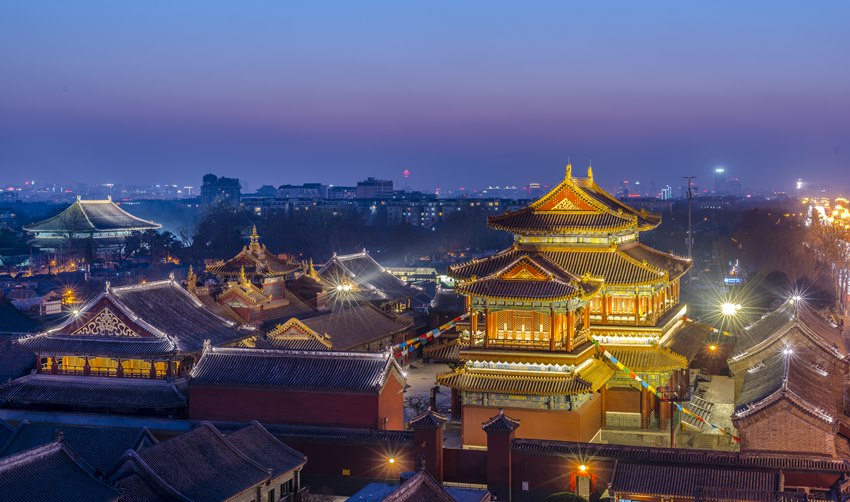Chinese Name: 雍和宫 Pronunciation: yōng hé gōng
English Name: The Lama Temple/Harmony and Peace Palace Lamasery/Yonghe Lama Temple
Recommended Time for Visit: 1-3 Hours
Building Time: 1694
Occupied Area: 6.64 acres(about 66,400 square meters)
Address: No.12 The Lama Temple (Yonghegong) Street, The Dongcheng District, Beijing
Building Function: An imperial temple and the place for emperors of the Qing dynasty (from1744 to 1911)to manage the religious affairs
|
Visitors
|
Price
|
| Admission Fee | 30 yuan |
| Child(with valid certificates): Age 6-18 | 12 yuan |
| Senior(with an ID card or passport): Age 60+ |
1. Buy tickets at the ticket office.
2. Book & pay online with an ID card, only 1 ticket for each ID every day, and no more than 3 tickets for registered cell phone number every single day. An ID card is needed at any gate for entrance. Please use the ticket on the selected date and period time.
3. The online booking system is open from 9:00 to 21:00, you could book the tickets for the next day. But the ticket number is limited, 5000 is the limit.
4. Only Wechat and Paypal are allowed to scan the QR code of the online booking system and to pay. Please don’t use the browser or the recognizable QR code to book directly.
|
Temple Gate
|
Peak Season
(April 1st to October 31st) |
Low Season
(November 1st to March 31st) |
| Opening Hours | 9:00-16:00 | 9:00-16:30 |
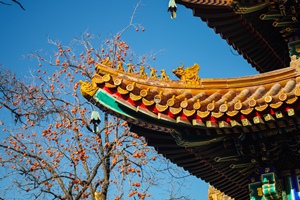
Located at the northeast corner of Beijing City, the Lama Temple is regarded as the largest and most perfectly preserved lamasery in present China. And it is also known as Harmony and Peace Palace Lamasery, Yonghe Lama Temple, Yonghe Lamasery, which was built on the dormitory of eunuchs of the Ming Dynasty. In 1694 during the Qing Dynasty, this building became the residence of Emperor Yongzheng when he was a prince. Then it was changed to a palace, then a temple. Finally, it became the national center of Lama administration.
The architectural layout of the Lama Temple is complete. The memorial arches stand in front of the temple, and there is a chariot outside the Gate of Peace Declaration (Zhaotaimen), demonstrating the grand royal majesty. The Lama Temple is a complete institution of Tibetan Buddhism. It was also the center for the government of the Qing Dynasty to deal with religious affairs.
The Lama Temple covers an area of 6.64 acres (about 66,400 square meters), and it was the first imperial temple of the Qing Dynasty. The highest building is the Ten-Thousand-Buddha Pavilion with the huge Madara Buddha standing inside, which implies the sacred landscape scene. After the founding of the People's Republic of China, the Lama Temple shows new vitality. Today, it is a combination of religious venues, museums and tourist attractions that attracts a large number of visitors from around the world every day.
In more than 30 years since it has been opened to the public, the Lama Temple meticulously implemented the Communist Party of China and the country's ethnic and religious policies and put efforts to strengthen the site construction. In the aspect of sangha management, system construction, temple style, and the protection of cultural relics, service to the society, it has made a positive exploration and efforts, composed a new chapter of spreading the Buddhism culture, and showed the image of Chinese religion. It also made a great contribution to national unity, religious and social harmony.
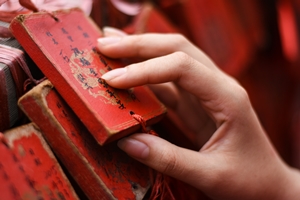
In history, The Lama Temple went through three stages.
In 1694, the 33rd year of the reign of Emperor Kangxi in the Qing Dynasty, it was built as the residence of Emperor Yongzheng (son of Emperor Kangxi) when he was a prince and the place where Emperor Qianlong (son of Emperor Yongzheng) was born and grew up.
In 1725, the 3rd year of Emperor Yongzheng (of the Qing Dynasty), it was rebuilt as the temporary imperial palace of Emperors of the Qing Dynasty.
In 1744, the 9th year of Emperor Qianlong(son of Emperor Yongzheng), when Beijing has been the capital of the Qing Dynasty for 100 years, it became a royal temple.
From 1950 to 1952, the state allocated large sums of money for the comprehensive renovation of the Lama Temple twice.
From 1952 to 1954, Mao Zedong, Liu Shaoqi, Zhou Enlai, Zhu DE and other leaders visited the Lama Temple and showed great concern for the life of monks and the management of the temple.
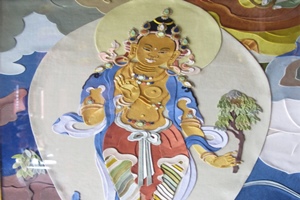
In March 1961, the Lama Temple was listed in the first batch of national key cultural relics protection units by the State Council.
In February 1981, it was opened to the public for religious activities.
In 1983, it was confirmed by the State Council as the national key temple of Buddhism in the area of ethnic Han.
In 1995, the Museum of Tibetan Buddhist Art (inside the Lama Temple) was established.
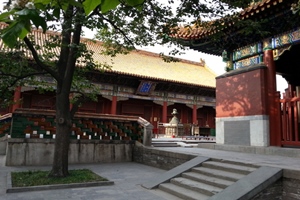
On the east and west sides of the main hall of the Lama Temple, there were four halls of preaching, tantric, medicine and mathematics, commonly known as the Halls of Four Studies. During the Qing Dynasty, it was the teaching center of Tibetan Buddhism at the Lama Temple. It was the school where Tibetan Buddhist monks learned classics and a large number of Buddhist talents for the Mongolian region were trained here.
The formal temple education of Tibetan Buddhism began in the 8th century. To the 15th century, after the Gelug sect came into being, due to the need of the religious organization system, a temple was divided into several Zhacang (meaning "monastery"), and this pattern became the basic shape of the main Tibetan Buddhist temple building of the Gelug sect. Monks first studied catechism in the monastery, and then they could get the degree of "Gesi" (meaning "good at knowledge"). It was very honorable for monks to get this degree, and they were qualified to serve as deacons at all levels of the monastery.
At the beginning of the 16th century, based on the original Buddhism courtyard, such temples as Ta Er Temple and Labrang Temple successively opened the Dharma Academy, the Medical College and the Shilin Academy. Since then, in Tibetan Buddhist monasteries, there have been traditions of studying linguistics, technology, medicine, logic, and Buddhism. At that time, there were two, four or six Zhacang in Monasteries in Tibet, among which the four Zhacang is mainly the Xianzong, Tantric, medical and astronomical almanac. Hence, the Halls of Four Studies of The Lama Temple came out.
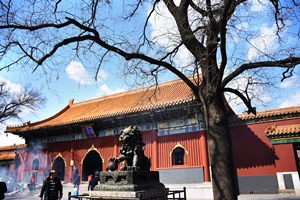
When emperor Qianlong converted the Lama Temple into a Tibetan Buddhist temple in 1744, he made it clear that monks who were proficient in Tibetan Buddhist classics and the inheritance of doctrines should be trained here, so that the monks in the temple could remain immortal and essence. After that, Emperor Qianlong issued the decree: as the master of each Zhacang, Gesi must be sent directly from Tibet. And the emperor instructed the seventh Dalai Lama to take charge of it. The seventh Dalai Lama sent the first group of 18 eminent monks from the three major monasteries and the upper and lower secret courts to take office.
The Halls of Four Studies in the Lama Temple in the Qing Dynasty had formed a good style of study due to the close organization and the fact that eminent monks taught with great virtue. Graduates were sent to other temples as abbot or other positions. At the same time, some accomplished monks returned to Mongolia or other monasteries after graduation, making contributions to the inheritance and development of Tibetan Buddhist culture.
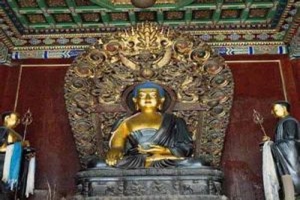
The Tibetan Buddhist Art insists on serving society and social development. There are two kinds of exhibitions in the museum, halls of the Lama Temple as well as the Buddha statues and other fine collections.
The collection of cultural relics in the Lama Temple mainly includes ancient buildings, inscriptions and other immovable cultural relics, as well as some movable ones such as statues, Thangkas and artifacts. Due to the nature of the royal temple, the collections of the Lama Temple mainly comes from the statues and artifacts given by the Qing royal families and the tributes from the Mongolian and Tibetan areas. The intangible cultural heritages mainly include the festival dharma meeting, the Macawan Exorcism dance, Buddhist music, Laba porridge, the dough production techniques, Tibetan fonts and so on.
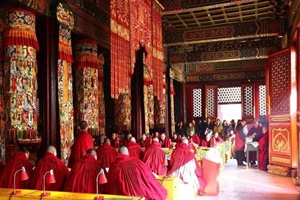
Yonghe Gong Hall is the main palace and three bronze Buddhas are displayed inside – Sakyamuni Buddha in the middle, Dipamkara Buddha on the right and Maitreya Buddha on the left. There are 18 Arhats (statues of Buddha disciples) positioned on both sides of the Hall.
North of the Yonghe Gong Hall is the Yongyou Hall, which was Emperor Yongzheng's living room when he lived there as a prince. After his death, his coffin was placed here. Now, a statue of Bhaisajya-guru is enshrined there.
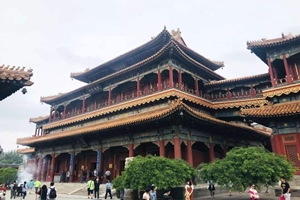
The Pavillion is the last formal palace to be visited in the Lama Temple. This is also the highest palace because it is about three stories high. There are tens of thousands of Buddhas displayed along with every level inside the pavilion. In the center. there is an enormous statue of Maitreya positioned on a white marble base.
Entrance → North Memorial Archway → Imperial Carriage Pathway → Zhaotai Gate → Bell Tower → East Stele Pavillion → Yonghe Gate Hall → Esoteric Hall → Medicine Hall → Yonghe Gong Hall → Yongyou Hall → East Side Hall → Falun Hall → Zhaofo Building → Wanfu Pavilion → The Cave of Avalokitesvara → Suicheng Hall
Take bus 13, 18, 75, 116 or 684 and get off at Yonghe Gong Qiaodong Station (the east side of the overpass outside the Lama Temple), and then walk west 2 minutes.
Take bus 13, 116, 117 or 684 and get off at Yonghe Gong Station (the Lama Temple), and then walk north 2 minutes.
Take line 2, 5 and get off at Yonghe Gong Station (the Lama Temple)
Chinese: 请带我去雍和宫。English: Please take me to The Lama Temple (Yonghegong).
If you go to the Lama Temple from the center of Beijing(Tiananmen Square), It takes about 22 minutes (30 yuan).
If you go to the Lama Temple from the Beijing Capital International Airport, it takes about 35 minutes (80 yuan).
If you go to the Lama Temple from the Beijing Daxing International airport, it takes about 120 minutes (190 yuan).
If you go to the Lama Temple from the Beijing West Train Station, it takes about 35 minutes (40 yuan).
